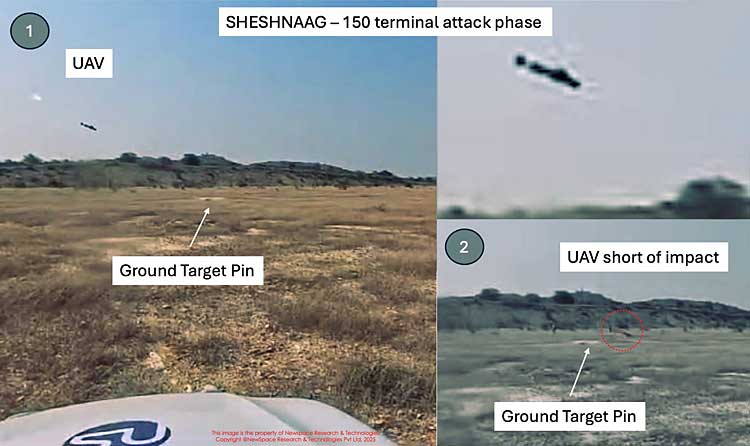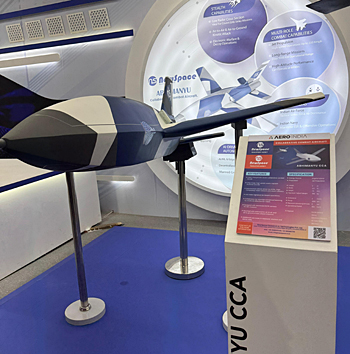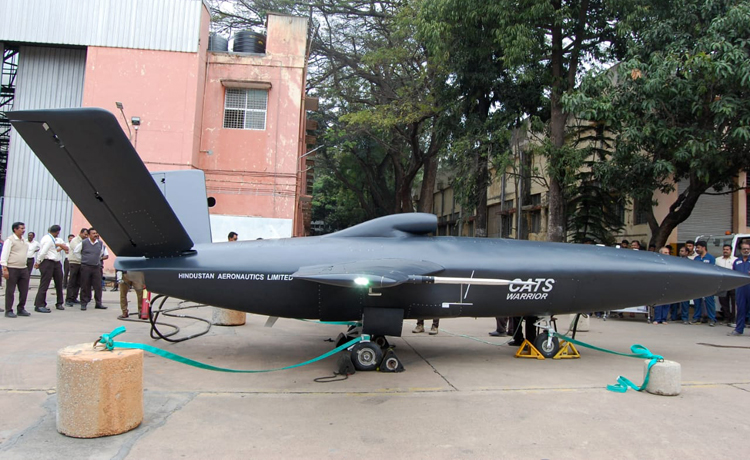INDIAN ARMED FORCES CHIEFS ON OUR RELENTLESS AND FOCUSED PUBLISHING EFFORTS

The insightful articles, inspiring narrations and analytical perspectives presented by the Editorial Team, establish an alluring connect with the reader. My compliments and best wishes to SP Guide Publications.

"Over the past 60 years, the growth of SP Guide Publications has mirrored the rising stature of Indian Navy. Its well-researched and informative magazines on Defence and Aerospace sector have served to shape an educated opinion of our military personnel, policy makers and the public alike. I wish SP's Publication team continued success, fair winds and following seas in all future endeavour!"

Since, its inception in 1964, SP Guide Publications has consistently demonstrated commitment to high-quality journalism in the aerospace and defence sectors, earning a well-deserved reputation as Asia's largest media house in this domain. I wish SP Guide Publications continued success in its pursuit of excellence.
- Operation Sindoor: Resolute yet Restrained
- India’s Operation Sindoor Sends a Clear Message to Terror and the World – ‘ZERO TOLERANCE’
- Japan and India set forth a defence cooperation consultancy framework, talks on tank and jet engines
- Terrorist Attack in Pahalgam in Kashmir: Unfolding a long surgical war against PAK
- Lt General Pratik Sharma takes over Command of Indian Army's Northern Command
Sheshnaag-150 & Abhimanyu N-CCAV
Significant breakthroughs in indigenous defence technology have been achieved with the Sheshnaag-150 Long Range Drone System and the Naval Collaborative Combat Air Vehicle (N-CCAV)
 |
The Author is Former Director General of Information Systems and A Special Forces Veteran, Indian Army |

It may be recalled that in 2018, the Indian Air Force (IAF) had launched the 'Mehar Baba Swarm Drone Competition', giving a timeline of three years. The 'Swarm Architecture' award was won by Bengaluru-based NewSpace Research & Technologies Private Limited (NRT), the 'Communication Architecture' award was won by 'Flaire Unmanned Systems', and the 'Drone Architecture' award was won by 'Dhaksha Unmanned Systems'. Separately, NRT, run by former IAF officer Sameer Joshi, also won a $15 million swarm drone order from the Indian Army.
NRT has achieved a significant breakthrough with the successful flight test of its Sheshnaag-150 Long Range Drone System, capable of overwhelming enemy defences and executing precision strikes
The NRT has achieved a significant breakthrough in indigenous defence technology with the successful flight test of its Sheshnaag-150 Long Range Drone System; collaborative attack swarming drones designed for coordinated swarm attacks, capable of overwhelming enemy defences and executing precision strikes. With an operational range exceeding 1,000 km and an endurance of over five hours, the Sheshnaag-150 can loiter over target areas, providing real-time surveillance and strategic attack options. The drone's capability to carry warheads weighing between 25-40 kg enables it to inflict substantial damage on enemy infrastructure, vehicles, and personnel.
The sophisticated software and electronic systems of the Sheshnaag-150 system enable the drones to operate with minimal human intervention, autonomously identifying, tracking, and engaging enemy targets. The system supports a variety of missions, including Intelligence, Surveillance, and Reconnaissance (ISR) and electronic warfare (EW) operations. Sheshnaag-150 can play a crucial role in monitoring high-altitude regions during a stand-off. These swarm drones can be deployed to identify enemy troop movements in real-time, enabling rapid response to potential incursions. On detecting an incursion, the drones can autonomously engage enemy positions, neutralising threats before they escalate into full-scale confrontation; minimising the risk to own soldiers while maintaining a strong defensive posture along the Line of Actual Control (LAC) with China and the Line of Control (LoC) with Pakistan. The system can also be used for pre-emptive counter-terror operations; like coordinated strikes on terror camps and hideouts, track and eliminate terrorists along infiltration routes, disrupting enemy communications and the like.
Sheshnaag-150 can play a crucial role in monitoring high-altitude regions during a stand-off. These swarm drones can be deployed to identify enemy troop movements in real-time, enabling rapid response to potential incursions
Sheshnaag-150 can address deep strike needs of the Indian Army, Air Force, and Navy and contribute to plug conventional capability gaps amid budgetary constraints. The requirement now is to quickly integrate the Sheshnaag-150 series addressing the challenges in doing so, which include:
- Interoperability – ensuring seamless communication and coordination between the Sheshnaag-150 and existing military systems, such as command and control networks, sensors, and other drones;
- Operational training and doctrine – develop doctrine and comprehensive training programmes for operators to effectively utilise the autonomous capabilities;
- Cybersecurity and data management – implement robust encryption and secure data transmission protocols, and managing vast amounts of data generated;
- Strategic and tactical adaptation – adapting existing tactical strategies to effectively utilise the Sheshnaag-150's capabilities in various combat scenarios, and understanding the strategic implications of deploying autonomous swarming drones like the Sheshnaag-150, including potential escalations and diplomatic repercussions.
Concurrently, the Indian Navy has contracted NRT to develop its Naval Collaborative Combat Air Vehicle (N-CCAV), an unmanned aircraft that will operate collaboratively with the Navy's MiG-29K and future Rafale M fighter aircraft

Concurrently, the Indian Navy has contracted NRT to develop its Naval Collaborative Combat Air Vehicle (N-CCAV), an unmanned aircraft that will operate collaboratively with the navy's MiG-29K and future Rafale M fighter aircraft. The N-CCAV is to be based on NRT's Abhimanyu collaborative combat aircraft/loyal wingman concept. The contract includes a minimum purchase quantity (MPQ) for a specified number of systems that the Indian Navy has committed to procuring once the platform is ready. Development of the Abhimanyu lightweight jet-powered N-CCAV has begun at NRT.
The Abhimanyu, a low-RCS (radar cross section) design, is expected to be a smaller and lighter platform compared to the "CATS Warrior" of Hindustan Aeronautics Limited (HAL), with a mandate to deliver manned-unmanned teaming missions with the Indian Navy's combat aircraft. The media speculation is that two separate CCA developments will consolidate in the future, with Warrior for the IAF and Abhimanyu for the Indian Navy. Here the question is if the Abhimanyu is better than the CATS Warrior, why should both the Navy and IAF not select the Abhimanyu?
The NRT Abhimanyu is being designed with modular architecture, making it adaptable for multiple roles, including surveillance, electronic warfare, and strike missions

The NRT Abhimanyu is being designed with modular architecture, making it adaptable for multiple roles, including surveillance, electronic warfare, and strike missions. It is expected to be both cost-effective and expendable, with an emphasis on rapid production; enabling deploying the system in large numbers, complementing both current and future fighter fleets. Moreover, these interconnected platforms can function as sensors, effectors, and command-and-control nodes, facilitating agile decision-making within a flexible, scalable operational framework. This structure is intended to seamlessly integrate emerging platforms, technologies, and operational concepts in the future.





